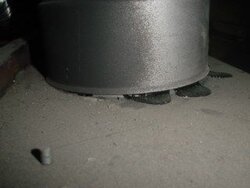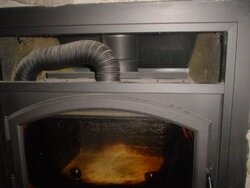Last winter I encountered a problem with creosote in liquid form leaking down the chimney and onto the top of the BIS Ultima. This created smoke inside the house and
I have been unable to get anyone out to help me find the problem. I even sent pictures to the manufacturer and still no help. It looks like there is something wrong with
the visible part of the stove pipe above the firebox. There is a small gap where the creosote was leaking out. Now the creosote is a hardened glob on top of the stove.
I cannot use the stove until I fix this problem. I would like to learn how to clean the chimney myself since it appears the problem was caused by the chimney sweeper pulling the stove pipe apart. thanks for any help.
I have been unable to get anyone out to help me find the problem. I even sent pictures to the manufacturer and still no help. It looks like there is something wrong with
the visible part of the stove pipe above the firebox. There is a small gap where the creosote was leaking out. Now the creosote is a hardened glob on top of the stove.
I cannot use the stove until I fix this problem. I would like to learn how to clean the chimney myself since it appears the problem was caused by the chimney sweeper pulling the stove pipe apart. thanks for any help.



